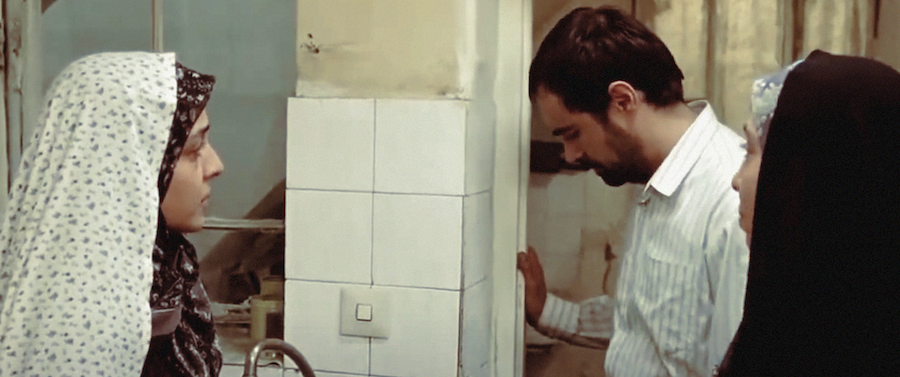[Film Journal] Kottukkaali - The Adamant Girl
Land, landscapes, nature, and nature's call
PS Vinothraj is known for his atmosphere, rooted thesis and the social comment in his works, even though he did not create more than two films as of now. It laid the foundation for his identity as an auteur film-maker, and I eagerly await his future projects. His second film draws my attention upon the first watch, then it grows on the second and makes an impression on the rest of the watches. The rhythm of the film is so engaging even with the leisurely-paced plot, structure is minimal and triggers the senses with its authentic realism. It is not going to be the review of his social critique, political correctness or criticism over irrational rituals, though these elements are integral to the film’s theme. Rather I want to express more from the cinematic and artistic commentary of this work, which interests me.

In many films, metaphors in a story might not go well with the plot, failing to blend naturally and eventually becoming mechanical, devoid of soul. However, In Kottukkaali, this is not the case, plot organically demands the rooster for a ritual, just as it requires a girl. Things such as this same girl’s hair is pinned in a tight controlled knot, much like her accompanied bird’s legs. Even in the social comment, the symbolic references suit neat. For an instance, the Male lead’s neck is applied with the limestone which is a rural way to heal the loss of voice caused by yelling and overuse of the vocal drum. Characters allow him to behave like that and try to heal the wound but not the underlying problem, ultimately they believe this state as a nature of the truth, in the same way they try to heal the rooster’s dizziness caused by the rope around the leg rather actually untie it.
I meant the blindness towards system as a “nature of the truth” here. Another instance , when he burst out , the father character asks
“Ennadi panneenga en pullaiya ?” (What have you people done to my son? )
This suggests that these men justifies an arrogant stupid outburst of this character, believes that he is not reason for his actions. Unfortunately, the system too enables this behaviour.
Take an elegant subtleness in a narration, things such as the limestone applied neck of this male lead hint to the events that are associated with the earlier day or week in the story. Soulless girl starring the camera without a blink, her mother with a hopeless face, everything is brutally crafted and starts to build the tension from an initial frame. When the tension turns into an action, words from his mouth answer all that subtleness in the character’s reactions and the nature of the world all this time.
Talking about the world and nature, look how they have established it terrifically like it has in its own rules. Nature calls, that even when the characters are rushed towards something, the wind blows relentlessly even amid uncomfortable silences, the water calmly travels in the middle of chaos, all these are creating a sense of inevitability. When talking about nature, I want to say that Vinodh’s work is no lesser than classic literary work, if you ask me. Take a look at the natural elements he embedded in a narration, in his previous film Pebbles. Snake, rats, ghosts, cactus plant which all are the props of dry land and synonymous to the Sangam literature’s Paalai thinai. (Dessert like land). In Kottukkaali, these elements are rooster, bull, monkeys, deities and more which are true and natural to its specific region or thinai in Sangam’s nomenclature.
As a world cinema, this film reminds me of the work of Asghar Farhadi, an Iranian film-maker. The way he inherently showcases the land, landscapes and geography of the specific region. For me, that’s how the world cinema should be. It should show the people, their stories and rituals, which we might never experience or read.

I still remember the promise scene from Farhardi’s Separation, where I was quite shocked when the major plot turned over simple resistance to false promise, which is tiny and might not look trivial to create conflicts, but for that region, it is not. In Kottukkaali, the reason behind that huge ruckus created by the character might look over-reaction for the situation and less sensical for foreigners, but in this landscape, it is not. So within the cultural and geographical landscape of the film, it holds profound meaning.
In the theatre, I remember people describing the ending of Kottukkaali as a bummer—boring and very disappointing. To me, this is easily the best ending for this world-grade cinema. They claimed that “nothing happened” in the final moments, but is that really the case?. There is a seven-minute shot which shows the ritual done by the man, similar to the typical assassination scene in an action film. The male lead is shocked, for the first time he hesitates towards the system and even has slight doubts about its laws. At least I did not expect any other conflict, action or happenings more than this.
Does this mean the film has no flaws? Absolutely not. Like all films, Kottukkaali has its own failures. An example would be that crow on top of a bull, it felt too mechanical or artificial as mentioned above. If we scrutinize it closely, we could likely find more imperfections in a work like this. Upon saying, Kottukkaali might not be a perfect film, but it is so close to perfection compared to films released in recent years and worth debating for its artistic choices. The fact that how this regionally rooted film handles bigger universal themes like flawed masculinity without compromising the aesthetics of the specific cultural setting excites me more. I desperately want to see more films of this kind, hope this creator inspires many.